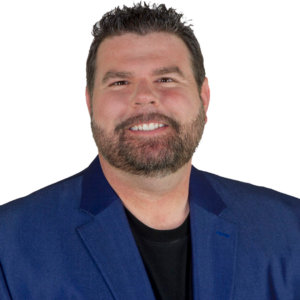Providing an open environment for honest feedback
All long-term care communities seek feedback via customer satisfaction surveys, staff surveys, town-hall forums and even suggestion boxes. But how open is your process for gathering honest feedback on the good, the bad and the ugly?
The fear of retaliation can be very real for those who rely on others for care, according to Shannon Gimbel, Ombudsman Program Manager for the Denver Regional Council of Governments. “They worry what that will mean for them later if they complain about someone they depend on to get them out of bed each day,” Gimbel says. “And even if it only results in the aide no longer saying good morning, it’s a lonely place to live if you’re now treated as a ‘task’ because you voiced a concern.”
But facilities practicing culture change, or person-focused care, build an environment that’s safe for everyone to express themselves. Elders or those closest to them make their own decisions. Relationships are a priority with residents, family, staff and administration, and everyone works together to contribute to a quality of life that reflects choice and shared conversations.
Building relationships first
When residents and staff alike are empowered to make decisions, the culture change transforms an institutional environment into one of care and autonomy. This creates an equal footing where residents are respected and less likely to fear voicing their opinion. “Culture change flattens the hierarchy,” says Susan Black, administrator of the Colorado Lutheran Home. “If you can do that, everyone is equal, no job is more important than any other and that alone can open up the channels of communication.”
But in the end, all the plans and policies won’t matter if there’s not a relationship, she adds. “We can implement every idea we come up with but if there’s not a relationship between us and the resident and family, then it just won’t work.”
Taking care of the family
With the resident’s permission, the best way to enhance open communication is by having more inclusion with the families. And for it to be effective, the communication needs to be regular, says Lynda Crandall, executive director of Pioneer Network, an advocacy group for person-directed care.
“Families can struggle having someone in a nursing home. They may be angry, sad or confused about what their role as a caretaker is now,” Crandall says. “So it’s important they understand that we’re here to take care of them, too.”
Acknowledging that it can be hard when a loved one is first admitted, some facilities have instituted management communication policies. At one home, the director calls the family during the first 24 hours, a nurse follows up the next day and the social worker is in contact on the third.
But not all conversations are easy. “Some families with estranged siblings may try to put the staff in the middle if they don’t want someone to see a family member,” Black says. “We have to explain that we won’t go there. It’s a conversation that should be had, but it needs to happen between family members.”
Learning to communicate
“Adults often think they communicate well, but most don’t,” Crandall says. “We all need to hone our skills and learn how to clarify what we don’t understand when talking to someone and be able to paraphrase back to them what we think we heard.”
At Colorado Lutheran Home, a Crucial Conversations class teaches staff how to understand their responses to situations, find the truth in a story and how best to handle difficult interactions. “Talking with families can sometimes be less than positive, but if we can recognize that they may be coming from a place of grief or loss, it’s easier to understand their expectations,” Black explains.
Family and resident councils can also help administration and staff deal directly with concerns or ideas, Gimbel adds. “Many of our administrators have shared instances where issues were resolved because of good ideas or assistance that came from an active family council.”
Learning to listen
“Being a good listener is not a passive activity,” says Crandall. “It’s hard work to listen with the intent to understand what’s being said. It can be easy to think a certain resident or family member just likes to complain, but when they come to us with something that is bothering them, we’ve already tuned them out.”
And those who feel their smaller concerns are being dismissed most likely won’t share larger ones. “I had a resident tell me, ‘if they won’t listen to my complaints about the food, why would I think they’d listen to my complaints about poor care?’” Gimbel recalls.
Not wanting to be labeled a complainer is another reason residents may hesitate to speak. But by asking what is the one thing they wish they could change, Gimbel finds that it helps shift the issue from a complaint to a suggestion. Recommending facilities also ask this question, she thinks they’d be surprised at the answers. “They’ll hear many things that are very easy fixes but that can make a huge impact on a resident’s quality of life,” Gimbel says.
Show—don’t tell
Creating opportunities to communicate can help strengthen relationships. Encourage family participation in care conference planning and to consider offering a more flexible schedule for those who work, Crandall suggests. Also, send out invitation letters that explain what the meeting is about, who will be there and the benefits of attending.
Neighborhood councils at Colorado Lutheran meet twice a month, giving both staff and residents the chance to understand each other’s perspective, according to Black. “And we always include a learning circle to discuss a topic. On Mother’s Day, for example, we all shared one thing our mothers had taught us.”
Crandall also recommends being a learning organization that focuses on providing the time, energy and money to teach staff the communication skills needed and the opportunity to practice what they’ve learned.
Other suggestions include asking residents and families for input on quality improvement decisions, participating in the interview process when hiring prospective employees and designating time so the staff and residents can just visit.
Eliminating the 'parking lot council'
Regardless of the best intentions, problems or misunderstandings will occur. And when they do, Crandall recommends facing the problem head-on—actively seeking out the resident or family to ask if their concerns have been addressed—instead of turning away. People still talk even when they feel they can’t speak openly. But instead of speaking productively with the administration, they may voice their opinions in the parking lot in front of other families—and the chance to understand their concerns and possibly resolve them may be lost.
Providing multiple avenues to connect with the staff and administration can bridge the gap with both family and resident. “Strong relationships deliver the message that this is what we do and why we need your support,” Crandall says. “When we’re all working together and advocating for the best care, everyone benefits.”
Debbie Sullivan Reslock is a contributing writer based in Evergreen, Colorado.
Related Articles
Topics: Articles , Executive Leadership , Leadership , Staffing











